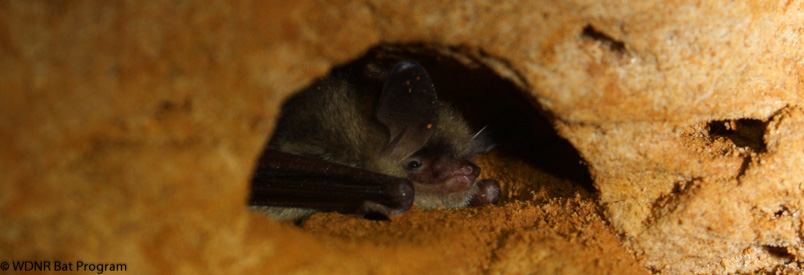
Bats are some of the most unique and ecologically beneficial animals in the world. They are the only mammals to have evolved true flight and there are over 1,200 species found worldwide. Bats are not rodents. They are in fact more related to primates than to rodents and they are members of their own order, Chiroptera which means "hand-wing".
Bats eat fruit, pollen, insects and other invertebrates, frogs, fish and even blood. In North America, bats are the primary predators of night-flying insects, and use echolocation to navigate and capture prey. Bats are important consumers for agricultural, forestry and human pest insects. It is estimated that bats in Wisconsin save farmers up to $658 million every year in the form of pest control services.
To learn more about bats, visit: Bat Conservation International.
Bats in Wisconsin
Wisconsin has eight species of bats, all of which are insectivorous and use echolocation to navigate and capture prey. Four species are known as the cave bats and hibernate in caves and mines throughout the winter. The cave bats are all susceptible to the devastating bat disease white-nose syndrome. The other four are known as tree bats, and these bats migrate south to warmer climates during winter.
| Cave Bats | Tree Bats |
|---|---|
|
Little brown bat Big brown bat Northern long-eared bat Tricolored bat (formerly Eastern pipistrelle)
|
Silver-haired bat Hoary bat Eastern red bat Evening bat |
Read more about the bat species found in Wisconsin or get answers to some common questions with the Wisconsin DNR Bat FAQ page.


This site is produced in conjunction with the Wisconsin Aquatic and Terrestrial Resources Inventory and sponsored by the Wisconsin Department of Natural Resources. The information presented on this site is subject to the Wisconsin Department of Natural Resources' Legal Notices, Disclaimers, and Terms of Use.